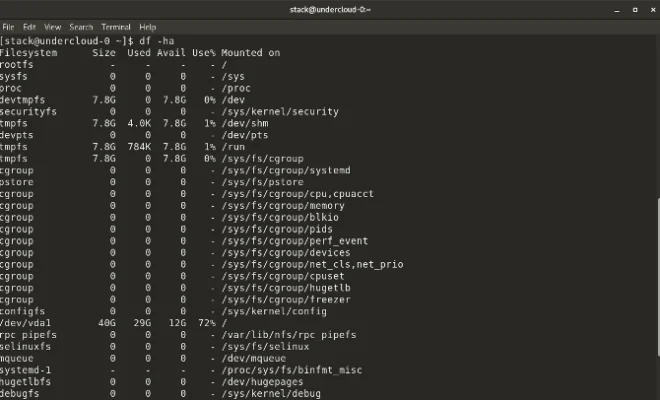How to Show Disk Usage in Linux With the du Command

If you’re a Linux user, you probably know that the du command is an essential tool for checking disk usage on your system. This command can help you determine which files and directories are taking up the most space on your hard drive, and it’s also useful for identifying any potential performance issues. In this article, we’ll take a look at how to use the du command to show disk usage in Linux.
First, let’s start with the basics. The du command stands for “disk usage,” and it’s used to calculate the size of a file or directory. When you run the du command on a file or directory, it will report back the amount of disk space that file or directory occupies. You can use du to get an overall view of how much space is being used on your system, or you can use it to drill down and identify specific files or directories that are taking up a lot of space.
To use the du command, simply open up a terminal window and type “du” followed by the path to the directory you want to check. For example, if you want to check the disk usage for your home directory, you would type:
du ~
This will give you a list of all the files and directories in your home directory, along with their sizes in bytes. You can also use du to scan specific directories by specifying their paths. For example, to check the disk usage for the /usr directory, you would type:
du /usr
This will give you a list of all the files and directories in the /usr directory, along with their sizes in bytes.
By default, the du command will show the size of each file and directory in bytes. However, you can use various options to change the output format. One of the most common options is the “-h” option, which stands for “human-readable.” This option will display the size of each file and directory in a more readable format, such as kilobytes (KB), megabytes (MB), or gigabytes (GB). For example, to check the disk usage of the /usr directory in human-readable format, you would type:
du -h /usr
This will display the size of each file and directory in the /usr directory in a more readable format.
Another useful option is the “-s” option, which stands for “summarize.” This option will show the total size of the directory you’re checking, without displaying the sizes of individual files and directories. For example, to check the total disk usage of the /usr directory, you would type:
du -s /usr
This will give you the total size of the /usr directory, without displaying the sizes of individual files and directories.
In conclusion, the du command is an essential tool for checking disk usage in Linux. With its various options, you can use du to get an overall view of how much space is being used on your system, or you can use it to drill down and identify specific files and directories that are taking up a lot of space. Use the du command regularly to keep tabs on your disk usage and prevent any potential performance issues.





